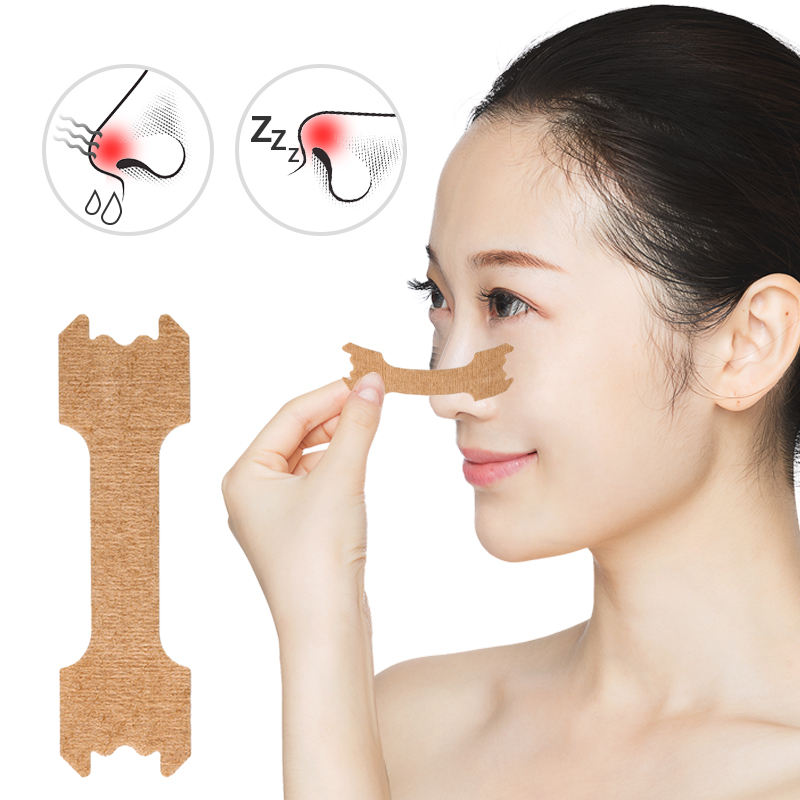Author:Kangdi 28-11-2023
Trouble falling or staying asleep is annoyingly common. Besides stresses of modern life, an overlooked factor often aggravating insomnia is restricted nasal breathing. Yes, your nose plays a pivotal role in quality sleep. Fortunately, nasal strips provide fast-acting relief by simple but science-backed mechanisms explored here:
01. Opening Airflow Highways
Nasal strips contain embedded spring-like bands that gently lift outer nostrils sideways to expand internal airspace. This instantly eases congestion, widening the dual respiratory channels crucial for unimpeded inhale-exhale airflow.
Like propping open clogged vents, the strips prevent anatomical structures like constricted blood vessels or swollen membranes from squeezing breath passageways. By ensuring air access even amidst colds, allergies or deviated septum conditions, nasal strips remove that suffocating sensation of congestion.
Uninterrupted oxygen availability and carbon dioxide outflow optimizes intake-outtake rhythms necessary for steady, relaxing breathing patterns - a key prerequisite for tranquil sleep.
02. Balancing Brain Signals
Stable respiratory patterns induce balanced nervous system signaling via close nose-brain connections. Breathing modulates the crucial hypothalamus region regulating sleep-wake bio-chemistry. Normally nasal detection of airflow fluctuations governs neurochemical release for arousing or calming effects appropriately.
For instance, fast-paced erratic breathing from congestion over-triggers stress hormones and arousal neurotransmitters like dopamine, adrenaline, cortisol etc. to disrupt drowsiness. Nasal strips however normalize intake-outtake signaling to the hypothalamus. This prevents overstimulation so sleep-inducing hormones like melatonin and serotonin dominate instead.
Through airflow balancing effects on nervous system pathways, nasal strips act as biohacks for ensuring brain chemicals facilitate resting states. The difference between wakefulness and sleeping often boils down to breathing patterns.
03. Improving Sleep Stages
Light early sleep features reactive alpha and theta brain waves indicating semi-arousable states where we drift in and out of true deep sleep marked by restorative delta waves with minimal disruptive stirring. Nasal breathing obstacles aggravate alpha and theta patterns through nerve signaling interference as described earlier.
However nasal strips enable uninterrupted airflow for sustained delta wave dominance. Studies utilizing polysomnography brain monitoring during sleep confirm 50% more time spent in rejuvenating slow wave sleep when using nasal dilators like strips. The adhesive bands prevent nervous system mixed signals that Fragment sleeping cycles. Thereby users experience greater sleep efficiency with sufficient time in each stage.
04. Supplementing Sleep Aids
Nasal strips boost the efficacy of sleep medications, aiding faster onset and longer effects from same doses. Whether over the counter antihistamines or melatonin tablets, combination use with nasal strips enhances bioavailability and absorption. Cleared congestion provides direct delivery pathways to target receptors. Nasal breathing alignment also optimizes intake timing in sync with metabolization processes through the night.
For those facing only periodic or mild sleep troubles, strips avoid need for medications altogether by removing a key trigger - congestion problems exacerbating insomnia. Studies demonstrate nasal dilator strips alone meaningfully improve sleep quality in majority of participants.
Summing Up
Insomnia stems from complex neurological, chemical and anatomical factors where restricted nasal breathing plays an underrated role. Thankfully nasal strips offer fast-acting relief by reliably expanding airflow channels through simple mechanical traction. Using adhesive bands at bedtime helps initiate and sustain quality sleep. So breathe free and sleep deeper with this handy biohack. Sweet dreams!
 0086 19937104978
0086 19937104978





